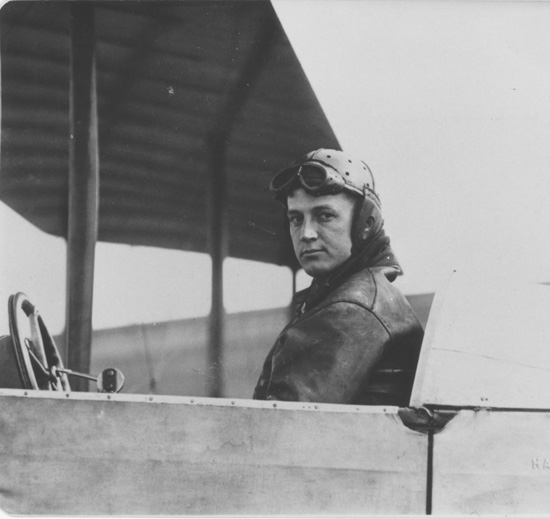
3 July 1915: At San Diego, California, Lieutenant Byron Quinby Jones, Signal Corps, United States Army, intentionally executed a loop and a stall from which he successfully recovered, the first Army pilot to do so.
© 2016, Bryan R. Swopes

3 July 1915: At San Diego, California, Lieutenant Byron Quinby Jones, Signal Corps, United States Army, intentionally executed a loop and a stall from which he successfully recovered, the first Army pilot to do so.
© 2016, Bryan R. Swopes
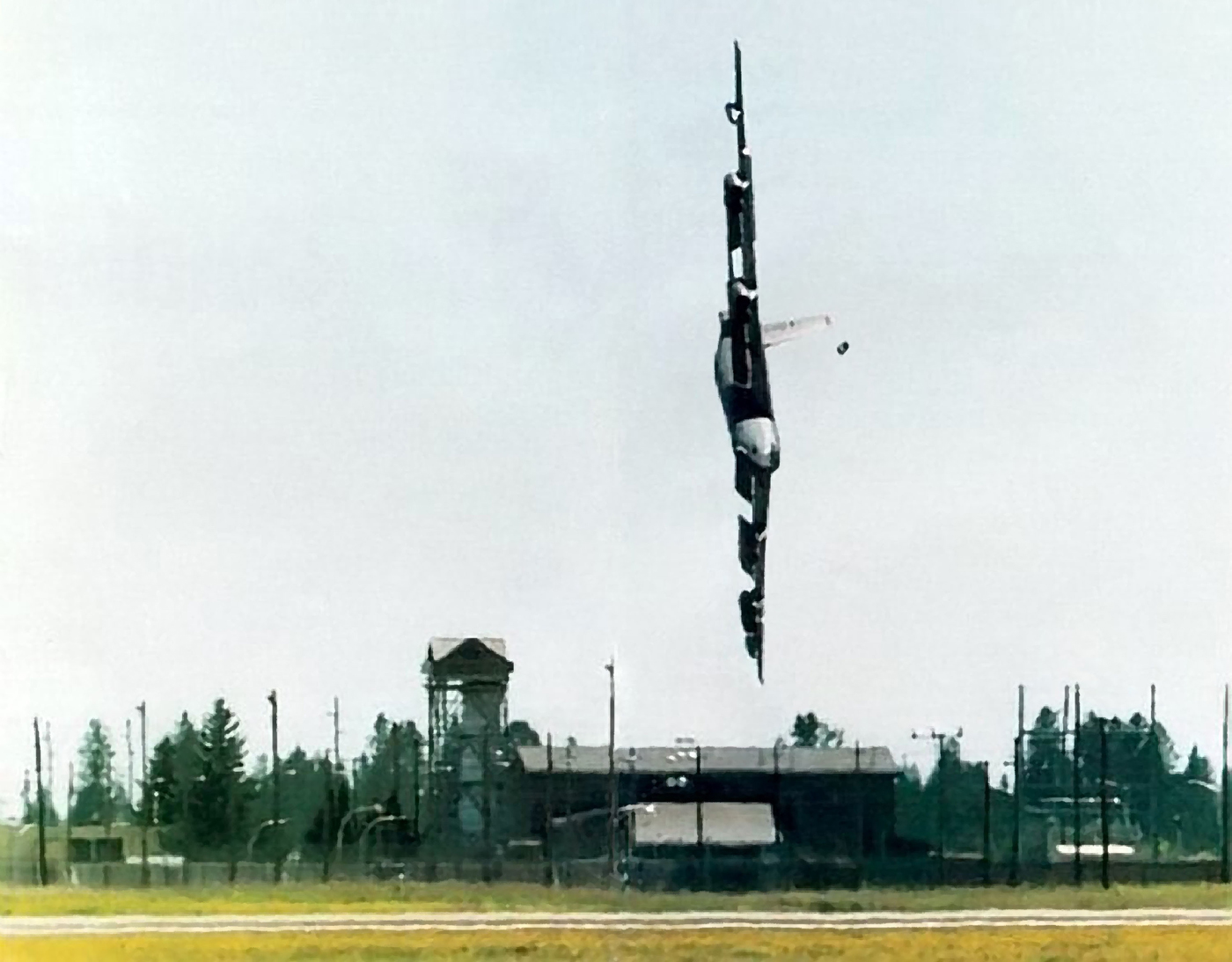
24 June 1994: At Fairchild Air Force Base, southwest of Spokane, Washington, a Boeing B-52H-170-BW Stratofortress, serial number 61-0026, call sign Czar Five Two, was being flown by Lieutenant Colonel Arthur Alan (“Bud”) Holland, the aircraft commander, with Lieutenant Colonel Mark C. McGeehan, commanding officer of the 325th Bomb Squadron, as the co-pilot. The vice commanding officer of the 92nd Bomb Wing, Colonel Robert E. Wolff, was aboard as the designated safety observer. The fourth crew member, Lieutenant Colonel Kenneth S. Huston, the 325th squadron operations officer, was the radar navigator.
The mission was a practice flight for an upcoming air show demonstration. During the 18 minute flight, virtually every maneuver performed by Lieutenant Colonel Holland exceeded the operating limitations of the B-52, and violated Air Force and Federal Aviation Administration regulations.¹
Bud Holland was notorious for his reckless flying. Many crew members had asked not to be assigned to fly with him. Many prior instances of dangerous flying had occurred. Officers in Holland’s chain of command were aware of these violations, but seemed to tolerate them. Only Lieutenant Colonel McGeehan had tried to have Holland grounded, but he was overruled.
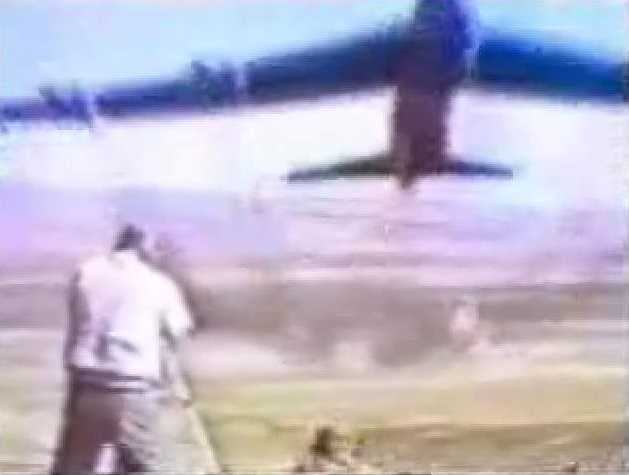
Apparently, Holland thought that he was such a great pilot that he could make the B-52 do anything.
While approaching the runway for a touch-and-go, the control tower instructed Czar 52 to go around because of another aircraft that had just landed and was still on the runway. Holland requested to make a left 360° turn around the tower, which was approved.
At an altitude of just 250 feet (76 meters)—the B-52’s wingspan is 185 feet—Holland put the bomber into a nearly 90° left bank. As he approached the 270° point of the turn, Czar 52‘s wings went beyond the 90° point. Holland added power, but no amount of power could keep the B-52 in the air, now. The bomber simply fell out of the sky, impacting the ground with a 95° angle of bank and 150 knots (278 kilometers per hour) indicated air speed. Lieutenant Colonel McGeehan fired his ejection seat, but did not escape before impact. All four officers were killed.
The following You Tube video shows the actual crash of Czar 52. Other videos available on the internet show the entire air show practice, as well as previous examples of Holland’s dangerous flying.
The crash of Czar Five Two is an example of Command Failure. Everyone in the chain of command knew that Bud Holland was a dangerous pilot, but no one, with the exception of Lieutenant Colonel McGeehan, tried to stop him.
61-0026 was one of the last B-52 bombers built by Boeing before production ended in 1962. It was accepted by the U.S. Air Force on 2 June 1962.
The B-52H is a sub-sonic, swept wing, long-range strategic bomber. It was originally operated by a crew of six: two pilots, a navigator and a radar navigator, an electronic warfare officer, and a gunner. (The gunner was eliminated after 1991). The airplane is 159 feet, 4 inches (48.565 meters) long, with a wing span of 185 feet (56.388 meters). It is 40 feet, 8 inches (12.395 meters) high to the top of the vertical fin. The B-52H uses the vertical fin developed for the B-52G, which is 22 feet, 11 inches (6.985 meters) tall. This is 7 feet, 8 inches (2.337 meters) shorter than the fin on the XB-52–B-52F aircraft, but the fin’s chord is longer.
The wings of the B-52H have a total area of 4,000 square feet (371.6 square meters). The leading edges are swept aft to 36° 58′. The angle of incidence is 6°, and there is 2° 30′ dihedral. (The wings are very flexible and exhibit pronounced anhedral when on the ground.) To limit twisting in flight, the B-52H has spoilers on top of the wings rather than ailerons at the trailing edges.
The bomber has an empty weight of 172,740 pounds (78,354 kilograms) and its Maximum Takeoff Weight (MTOW) is 488,000 pounds (221,353 kilograms).
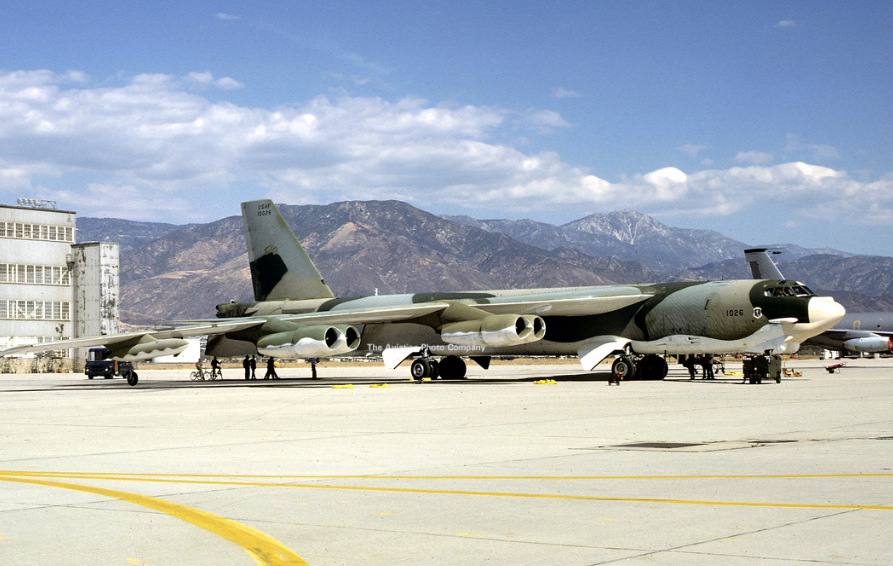
The most significant difference between the B-52H and the earlier Stratofortresses is the replacement of the eight Pratt & Whitney J57-series turbojet engines with eight Pratt & Whitney Turbo Wasp JT3D-2 (TF33-P-3) turbofans, which are significantly more efficient. They are quieter and don’t emit the dark smoke trails of the turbojets.
The TF-33 is a two-spool axial-flow turbofan engine with 2 fan stages, a 14-stage compressor section (7-stage intermediate pressure, 7-stage high-pressure) and and a 4-stage turbine (1-stage high-pressure, 3-stage low-pressure). The TF33-P-3 has a maximum continuous power rating of 14,500 pounds of thrust (64.499 kilonewtons) at 9,750 r.p.m., N1. Military Power, limited to 30 minutes, is 16,500 pounds (73.396 kilonewtons) at 10,000 r.p.m., N1. Each engine produces a maximum of 17,000 pounds of thrust (75.620 kilonewtons) at 10,050 r.p.m., N1, with a 5-minute limit. The TF33-P-3 is 11 feet, 4.32 inches (3.4625 meters) long, 4 feet, 4.93 inches (1.3442 meters) in diameter and weighs 3,900 pounds (1,769 kilograms).
The B-52H has a cruise speed of 456 knots (525 miles per hour/845 kilometers per hour). It has a maximum speed, with Military Power, of 555 knots (639 miles per hour/1,028 kilometers per hour) at 20,700 feet (6,309 meters)—0.906 Mach. The service ceiling is 46,900 feet (14,295 meters). The unrefueled range is 8,000 miles (12,875 kilometers). With inflight refueling, its range is limited only by the endurance of its crew.
The B-52H was armed with a 20mm M61A1 Vulcan six-barreled rotary cannon in a remotely-operated tail turret. The gun had a rate of fire of 4,000 rounds per minute, and had a magazine capacity of 1,242 rounds. After 1991, the gun and its radar system were removed from the bomber fleet. The flight crew was reduced to five.
The B-52H can carry a wide variety of conventional free-fall or guided bombs, land-attack or anti-ship cruise missiles, and thermonuclear bombs or cruise missiles. These can be carried both in the internal bomb bay or on underwing pylons. The bomb load is approximately 70,000 pounds (31,751 kilograms).
At the time of the crash, 61-0026 had a total of 12,721.5 hours on its airframe. It was the only B-52 remaining at Fairchild AFB and had been meticulously maintained and inspected. There were no discrepancies related to the accident. It was valued at $73,700,000.
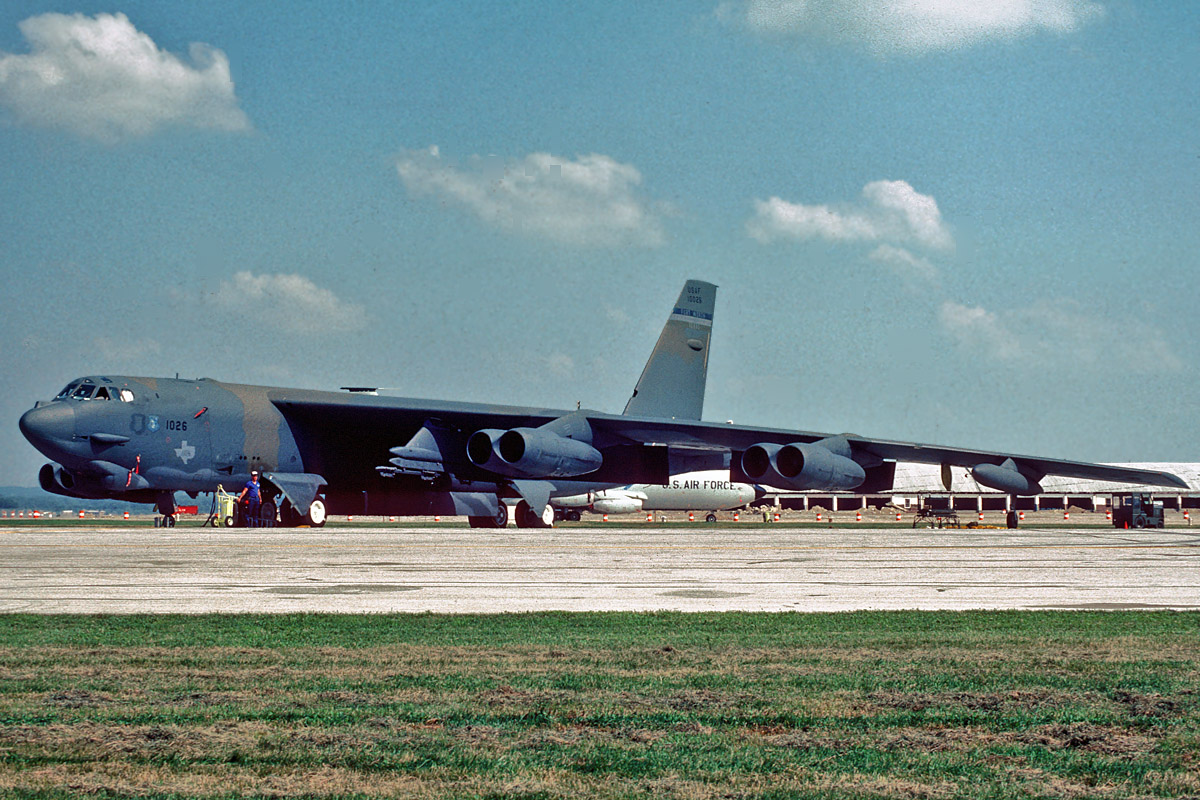
Arthur Alan (“Bud”) Holland was born 7 September 1947, in Suffolk, Virginia. He was the son of Arthur Leroy and Virginia Holland.
Holland attended Campbell University, Bules Creek, North Carolina, where he was a cadet in Reserve Officers Training Corps. He received a commission as a second lieutenant, United States Air Force Reserve in January 1971.
Holland and his wife, Sarah Anne, had two daughters, Heather Lee and Mary Margaret.
At the time of his death, Holland had served in the U.S. Air Force for over 23 years. He was a rated Command Pilot with a total of 5,275.3 flying hours, with 5,038.3 hours in the B-52 series (61.1 hours combat, B-52G).
Holland’s remains were interred at Fairmont Memorial Park, Spokane, Washington.
¹ In the official U.S. Air Force Aircraft Accident Investigation Board report (AFR 110-14), the list of regulations and technical orders violated by Lieutenant Colonel Holland on this 18 minute flight takes up three full pages (Page 23, 24, and 25).
© 2018, Bryan R. Swopes
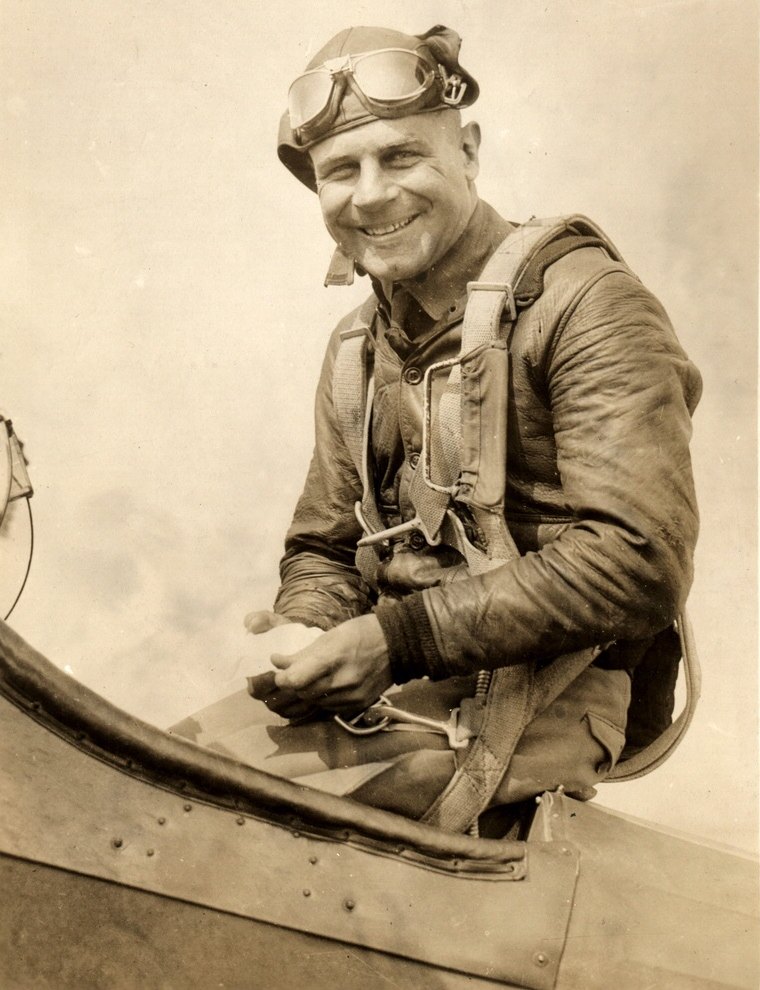
25 May 1927: At Wright Field, now Wright-Patterson Air Force Base, Dayton, Ohio, First Lieutenant James H. “Jimmy” Doolittle, United States Army Air Corps, was the first pilot to successfully perform an outside loop.
Flying a Curtiss P-1B Hawk pursuit, he began the maneuver in level flight at 10,000 feet (3,048 meters), then pushed the nose down into a dive. When he reached 280 miles per hour (450 kilometers per hour), Doolittle continued to pitch the nose “down” and the airplane flew through a complete vertical circle, with the pilot’s head to the outside of the loop.
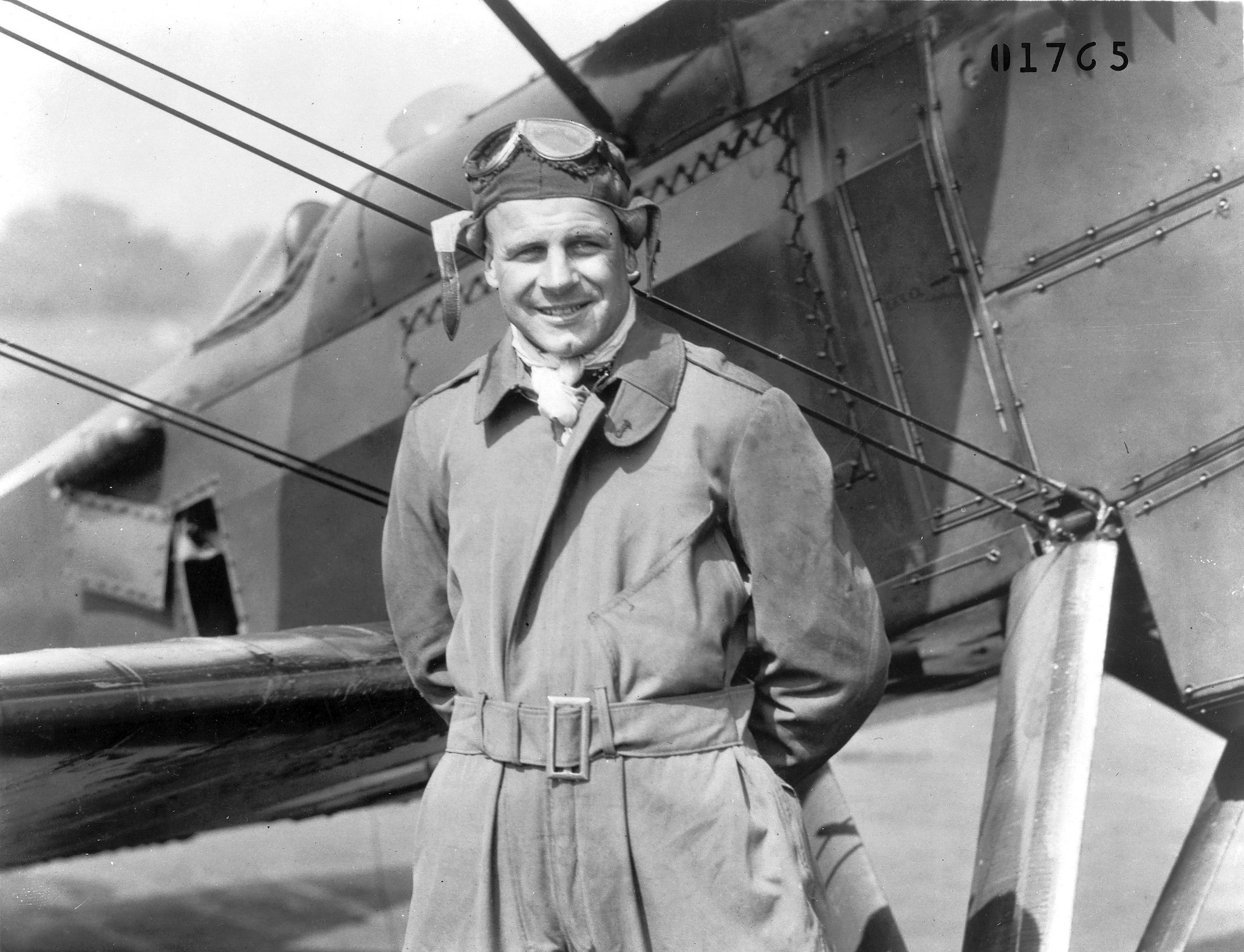
Jimmy Doolittle attempted to repeat the outside loop at the 1929 Cleveland National Air Races, with a Curtiss P-1C Hawk, serial number 29-227. The airplane’s wings came off but Doolittle parachuted to safety. (The Curtiss P-1C used wing radiators instead of the large radiator under the nose of the P-1B. This substantially reduced the aerodynamic drag which allowed the airplane to accelerate to too high an airspeed during Doolittle’s maneuver.)
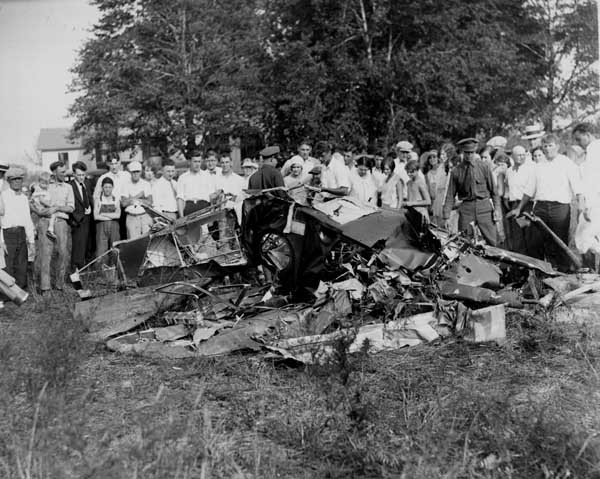
Jimmy Doolittle was one of America’s foremost pioneering aviators. He set many records, won air races, tested and developed new flying equipment and techniques. He was a highly-educated military officer, having earned his Bachelor of Arts from the University of California Berkeley School of Mines, and M.S and D.Sc. degrees in Aeronautical Engineering from the Massachusetts Institute of Technology. As a pioneer aviator, he won every international air race, and had been awarded every international aviation trophy. He was also the first pilot to fly completely by reference to instruments.
During the early days of America’s involvement in World War II, Lieutenant Colonel Doolittle planned and led the Halsey-Doolittle B-25 raid on Japan. He was awarded the Medal of Honor and promoted to brigadier general, and then placed in command of the Twelfth Air Force in North Africa. As a major general, he commanded the Fifteenth Air Force in the Mediterranean Theater of Operations. Lieutenant General Doolittle commanded the Eighth Air Force in England from January 1944 to September 1945. He supervised the transition of the 8th to the Boeing B-29 Superfortress and its eventual transfer to bases on Okinawa to continue the war against Japan. World War II came to an end before any of the 8th’s B-29s actually moved west.
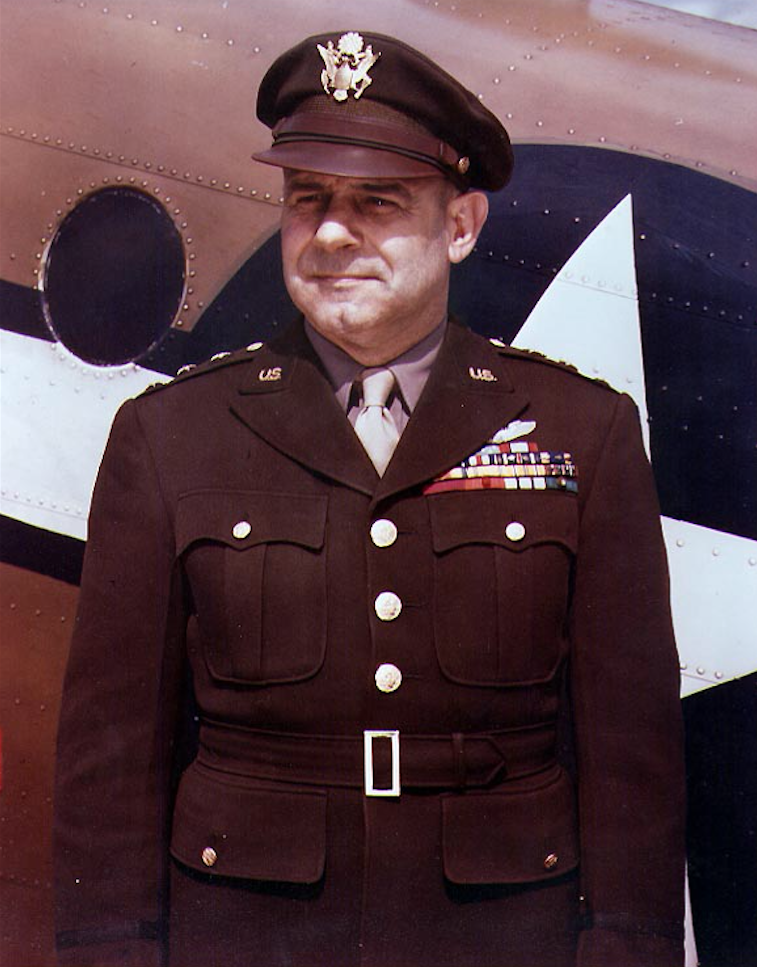
After the war, Lieutenant General Doolittle was placed on the inactive list. On 4 April 1985, by Act of Congress, James H. Doolittle was promoted to General, United States Air Force, Retired.
General James Harold Doolittle is the only person to be awarded both the Medal of Honor and the Medal of Freedom. He died 27 September 1993 at the age of 96 years. He was buried at the Arlington National Cemetery, Arlington, Virginia.
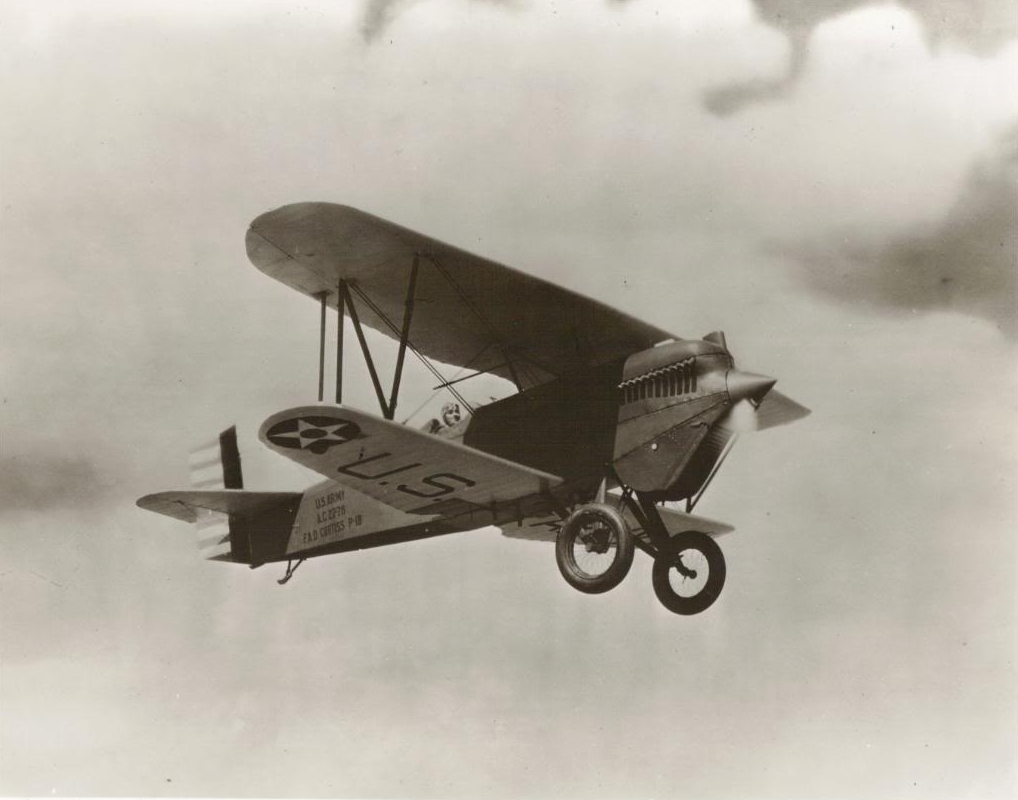

The P-1B was 22 feet, 10 inches (6.960 meters) long with an upper wingspan of 31 feet, 6 inches (9.601 meters). The lower wing had a span of 26 feet, 0 inches (7.925 meters), a narrower chord, and was staggered 3 feet, 2½ inches (0.978 meters) behind the upper. Both wings had significant taper with rounded tips. Their angle of incidence was 0°. The upper wing had no dihedral, while the inboard lower wing had 1°, and the outer, 5°. The total wing area was 252 square feet (23.4 square meters). The horizontal stabilizer span was 10 feet, 6.0 inches (3.200 meters) and its incidence could be adjusted from +3° to -1.5°. The vertical fin was offset 2° left of the airplane’s centerline. The overall height of the airplane was 8 feet, 10 inches (2.712 meters).
The P-1B had an empty weight of 2,105 pounds (955 kilograms), gross weight of 2,932 pounds (1,330 kilograms), and maximum weight of 3,562 pounds ( kilograms).
The P-1B was powered by a liquid-cooled, normally-aspirated, 1,145.1-cubic-inch-displacement (18.8 liter) Curtiss D-12D (V-1150-3) dual overhead cam (DOHC) 4-valve 60° V-12 engine with a compression ratio of 5.7:1. It was a direct-drive engine, rated at 415 horsepower at 2,000 r.p.m. at Sea Level, and 460 horsepower at 2,300 r.p.m. The D-12 was 58¾ inches (1.492 meters) long, 34¾ inches (0.883 meters) high and 28¼ inches (0.718 meters) wide. It weighed 680 pounds (308 kilograms). The P-1B was equipped with an aluminum Curtiss-Reed propeller with a diameter of 8 feet, 9 inches (2.667 meters).
The pursuit had a cruise speed of 127 miles per hour (204 kilometers per hour). Its maximum speed was 159.6 miles per hour (256.9 kilometers per hour) at Sea Level, and 157 miles per hour (253 kilometers per hour) at 5,000 feet (1,524 meters). It had a service ceiling of 21,400 feet (6,523 meters) and absolute ceiling of 22,900 feet (6,980 meters). Its range was 342 miles (550 kilometers).
The P-1B was armed with two fixed air-cooled Browning machine guns, one .50-caliber and one .30-caliber.
The Air Corps ordered 93 Curtiss P-1 Hawks between 1925 and 1929.
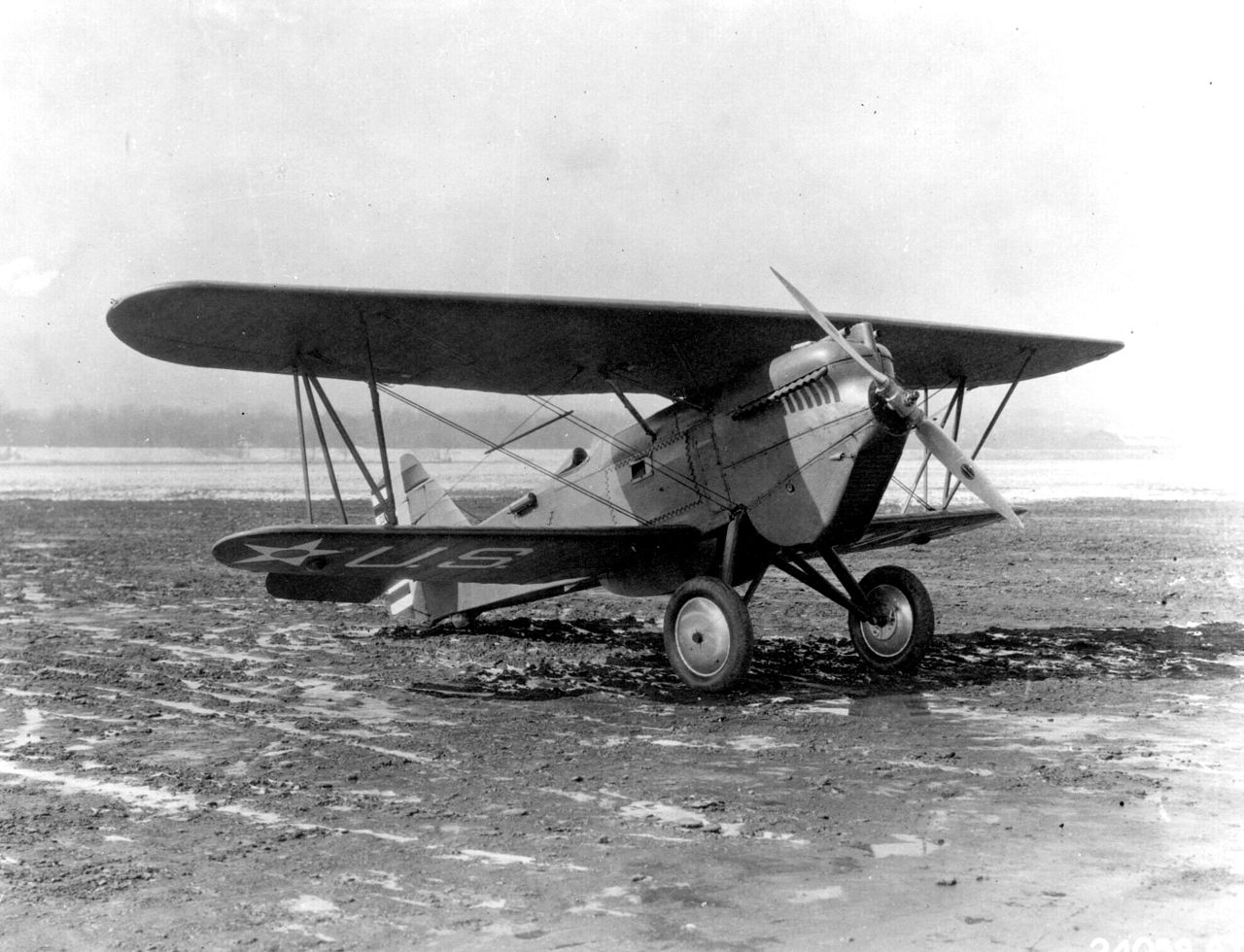
© 2018, Bryan R. Swopes
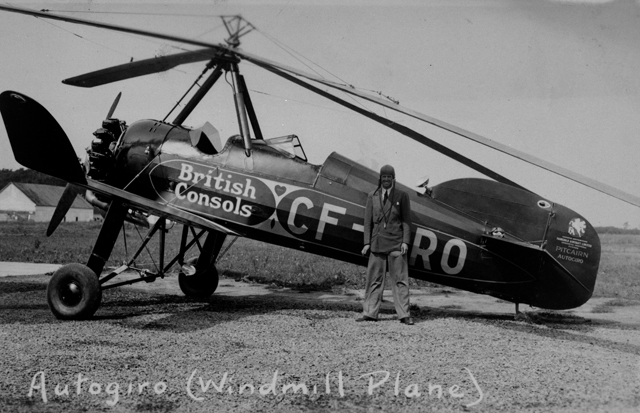
The Gazette reported:
CANADIAN PILOT PIONEER IN FEAT
G.W. Dean, Flying “British Consols,” First to Loop the Loop in Autogiro
Fresh from new aerial triumphs, The “British Consols” autogiro, with Pilot Godfrey W. Dean at the controls, dropped from the clouds at the Fairchild Field at Longueuil yesterday afternoon. Pilot Dean and his machine have made a new all-time record for aviation in North America at least, for twice this week they have performed the hitherto impossible. They have “looped the loop” in an autogiro.
Three months ago, when the “British Consols,” sponsored by the Macdonald Tobacco Company of Montreal, first appeared locally, it created a sensation. Now it has another sensation to its credit, for it has done what the aviation world held to be impossible for any machine of the autogiro type. Never before on this side of the Atlantic has any machine with the rotar blades above been put into a loop. At the test field of the Pitcairn Company, makers of the queer “windmill” craft, Pilot Dean turned the “British Consols” into the evolutions of the loop. The machine was at the Pitcairn factory for a complete overhaul, after its strenuous aerial voyages above Canada, and on completion of the repairs and checking, its pilot demonstrated that with the proper care the loop is as possible to this type of aircraft as to the ordinary airplane. Twice the machine “looped,” first in what is known as a “loose” loop to the air-minded, and then in a “tight” loop. The daring of the local flier and the perfect co-ordination of his machine surprised the most experienced of the Pitcairn staff. Even the test pilots were aghast as the evolutions were completed.
According to Captain Dean’s own description of the feat, the autogiro behaved very much as any other airplane would have done. The sensational feature of the stunt is that there are no wings to support the ‘giro in its upsidedown manoeuvre. The machine is kept in the air by the action of the rotar blades above it. With the machine reversed it has always been supposed that the rotar blades would stop and therefore drop the machine. This was not the case.
Pilot Godfrey W. Dean, who was loaned by the Canadian Airways to fly the “British Consols,” has hung up more than one autogiro record since he took over the controls of the machine last July. Before he returned to the Pitcairn factory at Willow Grove, Pa., for his overhaul, he had crossed the continent twice. No other autogiro had ever established such a record. He had flown the machine 212 hours, according to the official log. At an average speed of 90 miles per hour, this means that the “British Consols” covered more than 20,000 miles of territory before it went back to the factory. The average flight of previous autogiros has been around the 100-hour mark in the air.
To hundreds of thousands of Canadians, from the Atlantic seaboard to the Pacific coast, the “British Consols” was the first autogiro they had ever seen It is the only machine of its kind under Canadian registration. From now on, the machine will be seen locally in some of its peculiar flight manoeuvres.
—The Gazette, Montreal, Quebec, Canada, Vol. CLX, No. 250, Thursday, October 15, 1931 at Page 2, Column 2
Pitcairn PCA-2 CF-ARO, serial number B-15, had previously been registered to Hubert M. Pasmore, with United States Department of Commerce, Aeronautics Branch, registration NC10786.
An autogyro is a rotary wing aircraft that derives lift from a turning rotor system which is driven by air flow (autorotation). Unlike a helicopter, thrust is provided by an engine-driven propeller. The engine does not drive the rotor.
The Pitcairn Autogyro Company’s PCA-2 was the first autogyro certified in the United States. Operated by a single pilot, it could carry two passengers. The fuselage was constructed of welded steel tubing, covered with doped fabric and aluminum sheet.
The PCA-2 was 23 feet, 1 inch (7.036 meters) long, excluding the rotor. The low-mounted wing had a span of 30 feet, 0 inches (9.144 meters), and the horizontal stabilizer and elevators had a span of 11 feet, 0 inches. (3.353 meters). The overall height of the autogyro was 13 feet, 7 inches (4.140 meters). The PCA-2 had an empty weight of 2,233 pounds (1,013 kilograms) and gross weight of 3,000 pounds (1,361 kilograms).
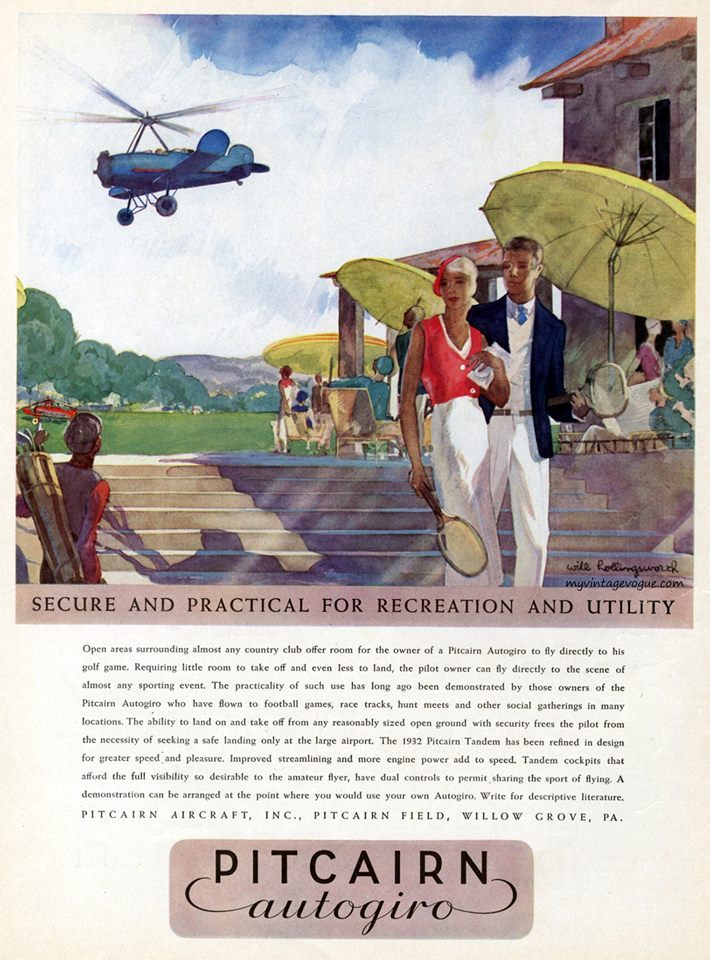
The four-bladed rotor was semi-articulated with horizontal and vertical hinges to allow for blade flapping and the lead-lag effects of Coriolis force. Unlike the main rotor of a helicopter, there was no cyclic- or collective-pitch motion. The rotor system was mounted at the top of a pylon and rotated counter-clockwise, as seen from above. (The advancing blade is on the right.) The rotor had a diameter of 45 feet, 0 inches (13.716 meters). The blades were approximately 22 feet (6.7 meters) long, with a maximum chord of 1 foot, 10 inches (0.559 meters). Each blade was constructed with a tubular steel spar with mahogany/birch plywood ribs, a formed plywood leading edge and a stainless steel sheet trailing edge. They were covered with a layer of very thin plywood. A steel cable joined the blades to limit their lead-lag travel.

The PCA-2 had two fuel tanks with a total capacity of 52 gallons (197 liters). It also had a 6½ gallon (24.6 liter) oil tank to supply the radial engine.
The PCA-2 had a maximum speed of 120 miles per hour (193 kilometers per hour). It had a service ceiling of 15,000 feet (4,572 meters) and a range of 290 miles (467 kilometers).
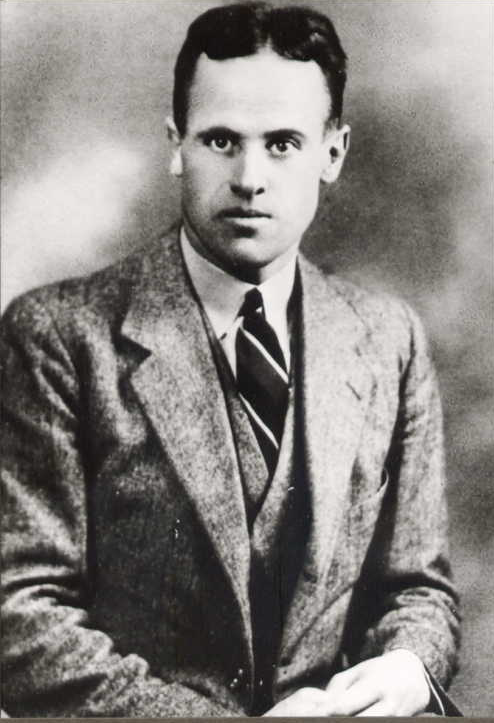
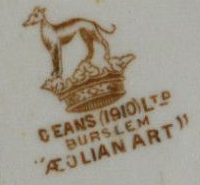
Godfrey Webster Dean was born at Burslem (Stoke-on-Trent), Staffordshire, England, 6 April 1897. He was the third of three children of Samuel Webster Dean, chairman of Edge, Malkin & Co., and a manufacturer of pottery (S.W. Dean, and, later, Deans (1910) Ltd. His mother was Mary Edna Edge Dean.
From 1914, Dean served as an officer in the British Indian Army (Indian Reserve of Officers, I.A.R.O.). He was with the 1/1 Gurkhas in Iraq and Kurdistan. Lieutenant Dean received a commission as a 2nd Lieutenant, Royal Field Artillery, 8 October 1917. He was deployed to France, from 5 June 1917.
For his service during World War I, Lieutenant Dean was awarded the British War Medal 1914–1916 with Kurdistan and Iraq clasps, and the Victory Medal 1914–1918.
From 1920 to 1921, Lieutenant Dean was an artillery instructor assigned to te Persian Army.
Following the War to End All Wars, Lieutenant Dean transferred to the Royal Air Force as a Pilot Officer on probation. His rank was confirmed 1 November 1922. He was next promoted to Flying Officer on 1 November 1923.
Flying Officer Dean was transferred to the Reserve, Class A, 1 May 1926, and to Class C, 25 June 1926.
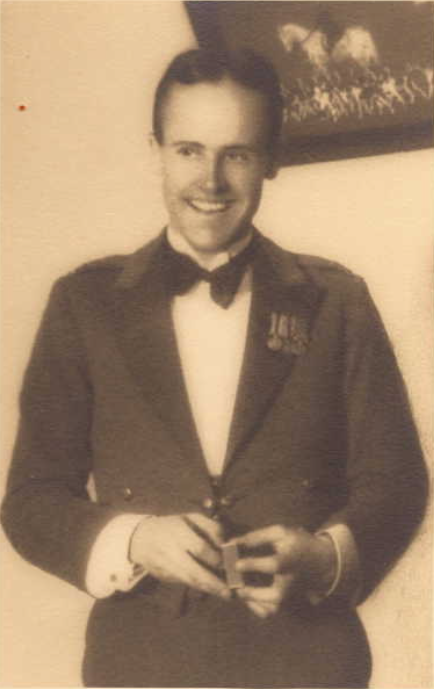
On 1 May 1930, Flying Officer Godfrey Webster Dean relinquished his commission on completion of service.
Dean was employed as a pilot for Fairchild Aviation Company in April 1927. That company was absorbed by Canadian Airways Ltd. On 12 March 1932, he was flying a ski-equipped Junkers W33fi, CF-ASI, with a load of cargo from Tashota, Ontario, Canada, to a trading post at Kagainagami Lake. The airplane crashed and burned. (Some sources say that it caught fire in flight, then went out of control. Others say it went down in a snowstorm.) A contemporary report described the actions of a witness:
“Mr. Bates was watching the machine approach, but lost sight of it just prior to landing behind an island. In seeing smoke arising from behind the island, Mr. Bates ran to the machine and pulled pilot Dean’s body from the wreckage. While he was doing so, the machine was burning, the flames having just reached the pilot’s cockpit. Mr. Bates displayed courage of no mean order, as the flames were then close to the gas tanks, which might have caught fire and exploded at any minute . . . The courage shown was a of a very high order, particularly as Mr. Bates probably could see from the wreck that the pilot was already beyond assistance.”
According to contemporary newspaper articles, Dean’s body had no burns.
Godfrey Webster Dean was buried at Cimetière Mont-Royal, Outremont, Quebec, Canada.
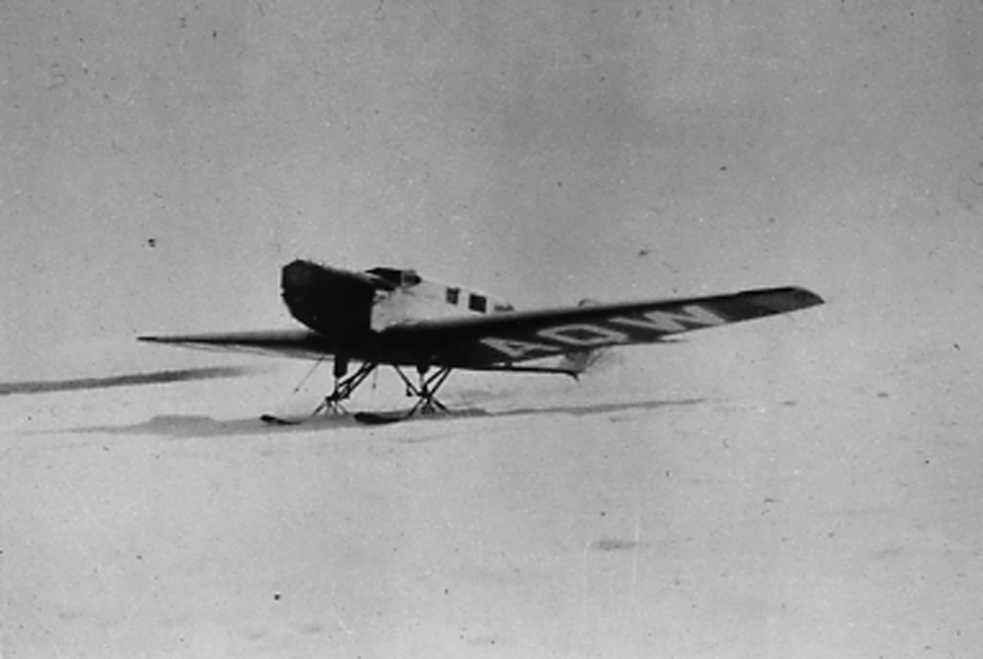
© 2018, Bryan R. Swopes
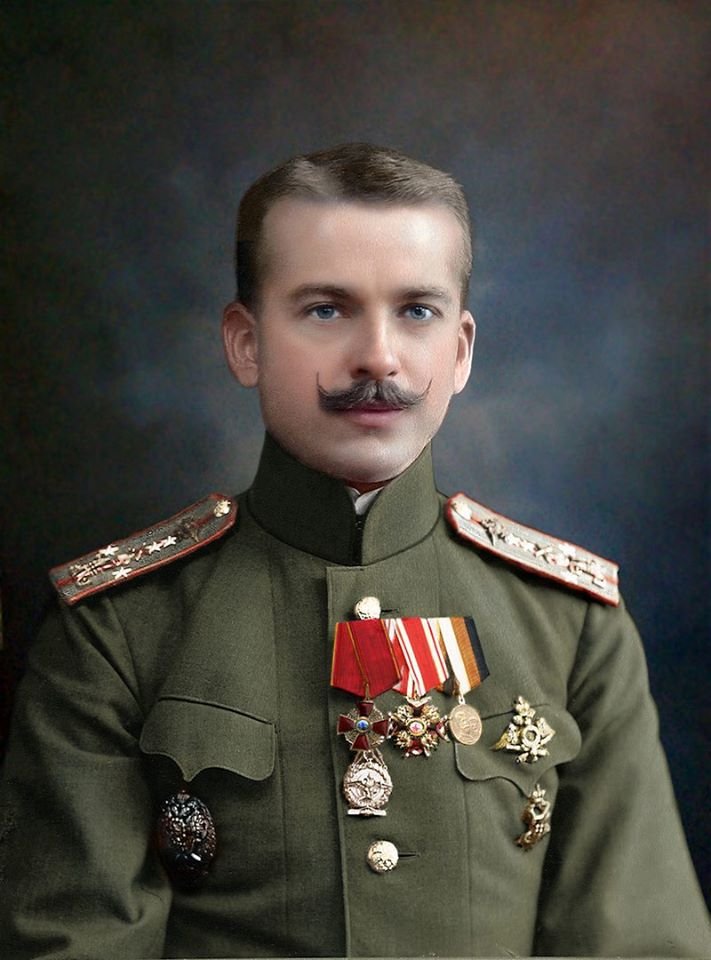
9 September 1913 (27 August 1913, Old Style ¹): At the Syretsky military airfield west of Kiev, Ukraine, Imperial Russia, Пётр Николаевич Нестеров (Pyotr Nikolayevich Nesterov), a military officer, flew a Nieuport IV.G into an inside loop, the first time this aerobatic maneuver had ever been performed.
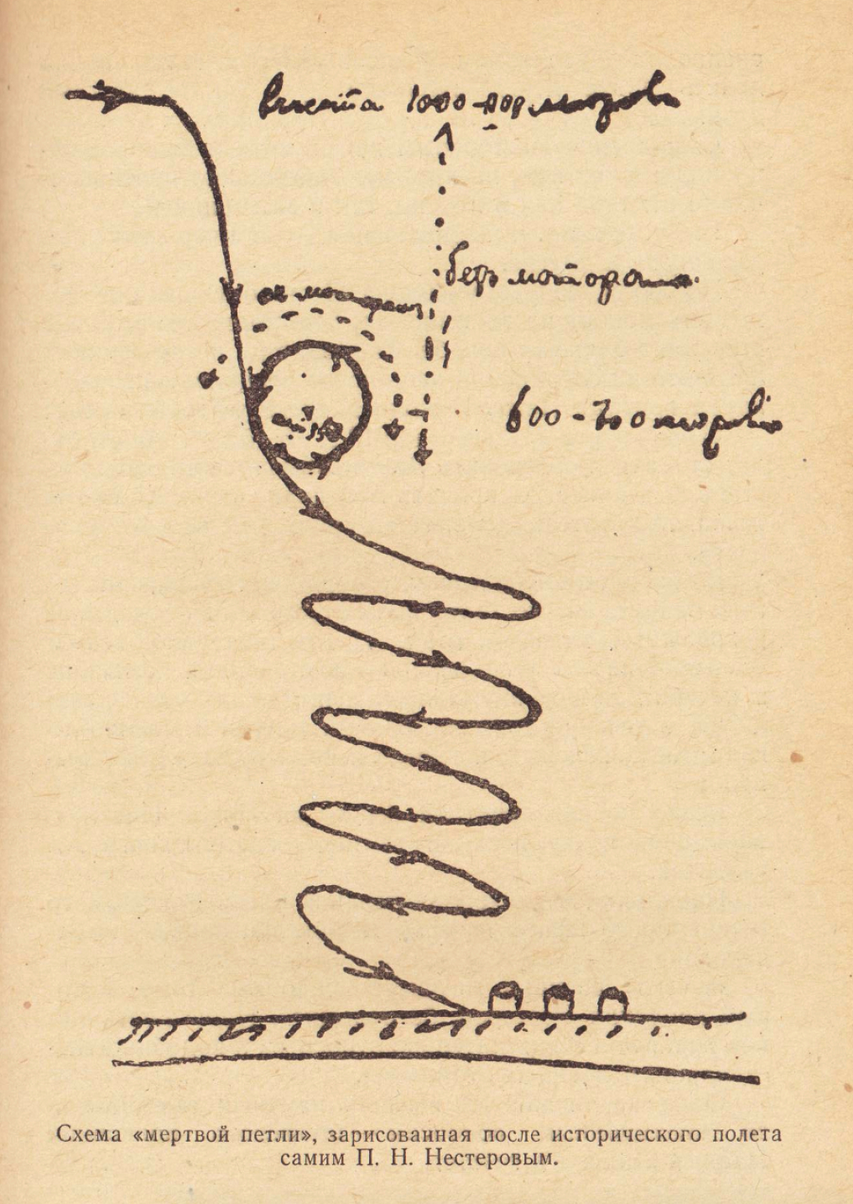
Also known as “Nesterov’s Loop,” or a “dead loop,” the inside loop was completed by entering from a dive, pulling the nose up and flying in a closed curve in the vertical plane (with the top of the airplane toward the center of the loop at all times), and then returning to a dive.
This maneuver is now performed beginning and ending in straight and level flight, but airplanes of the time had insufficient power.
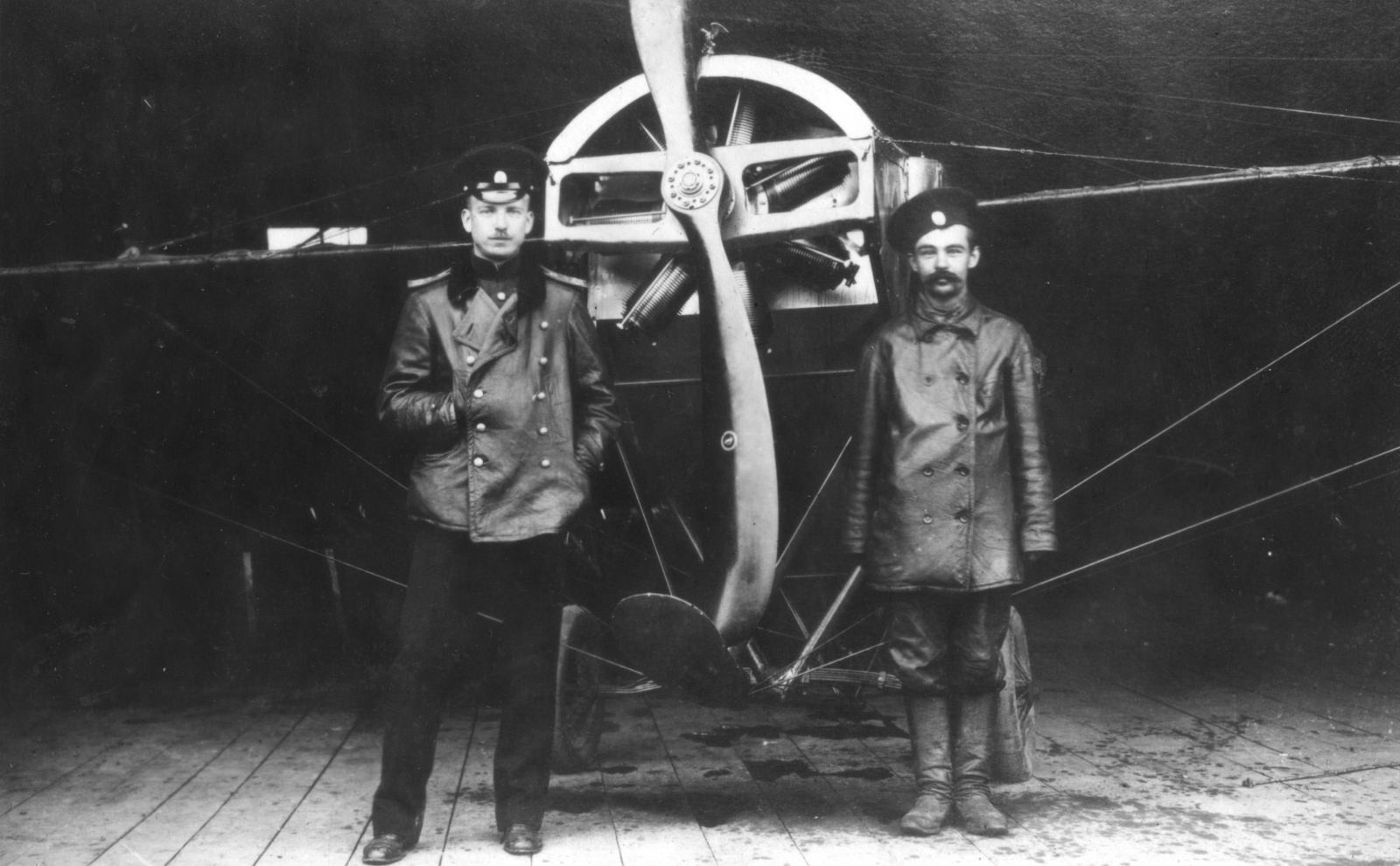
The airplane flown by Lieutenant Nesterov was a Nieuport IV, designed by the French aircraft company, Société Anonyme des Éstablissements Nieuport, and built in Russia by several manufacturers. The variant flown by the Imperial Russian Air Service was powered by an air-cooled, normally-aspirated, 10.292 liter (628.048 cubic inch displacement Société des Moteurs Gnome Gamma seven-cylinder rotary engine, which produced 70 horsepower at 1,200 r.p.m.
“. . . I sat head down for a few moments and did not feel rush of blood to the head, I was sitting tightly, and legs pressed on the pedal … Tools in the open boxes remained in their places. Gasoline and oil also keeps the centrifugal force at the bottom of the tank, ie, at the top, and normally fed to the engine, which worked perfectly the entire upper half of the loop. In general, all this proves that the airplane made regular rotation, only in the vertical plane, as all the time there was a dynamic equilibrium. With this only turning the air is defeated by man. . . . Man mistakenly forgot that in the air the support is everywhere, and he should cease to determine the direction in relation to the earth. “
—The pilot innovator Peter Nesterov, National Technical University of Ukraine, Igor Sikorsky Kyiv Polytechnic Institute
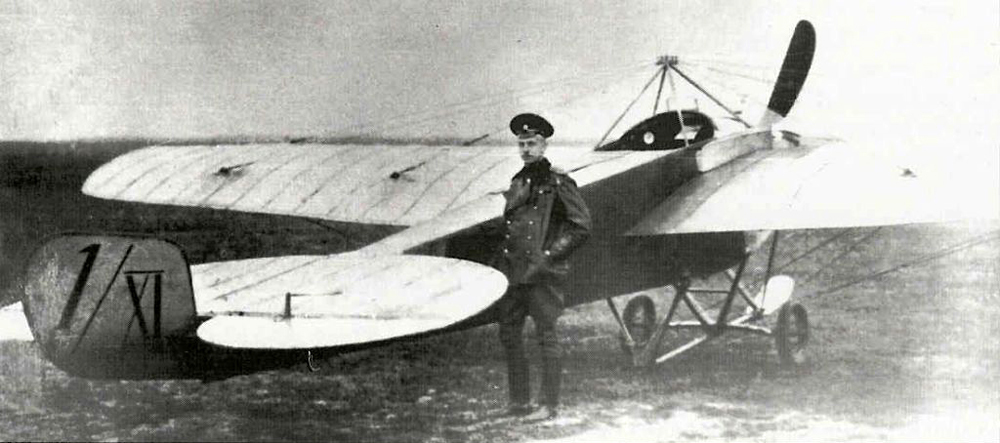
One year later, 8 September 1914 (25 August 1914, Old Style), Nesterov became the first pilot to destroy an enemy aircraft in aerial combat. Flying a Morane Saulnier Type G near Zhovkva, Ukraine, Nesterov rammed an Albatros B.II. Both aircraft were so badly damaged that they crashed. The Austrian pilot, Franz Malina, and observer, Baron Friederich von Rosenthal, were both killed. Nesterov died of injuries the following day.
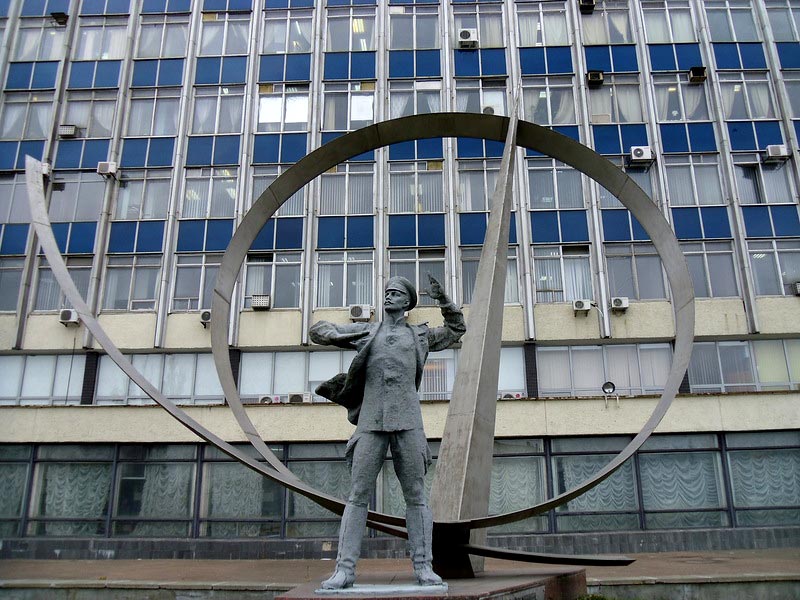
¹ Imperial Russia used the Julian Calendar until the October Revolution when the Gregorian calendar was adopted.
© 2017, Bryan R. Swopes